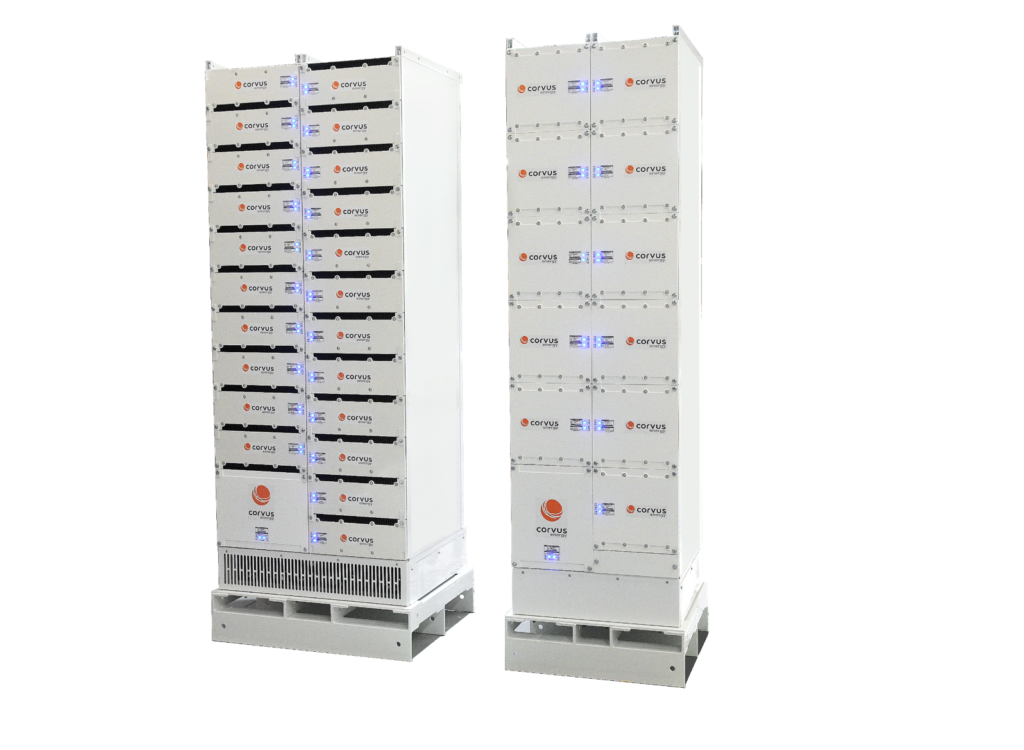This is the final article in a series highlighting the five remarkable design features incorporated into the Orca™ Energy Storage System (ESS) product line design—a design that earned Corvus Energy the Electric & Hybrid Marine Technology 2017 Innovation of the Year award, as well as the BC TIA Technology Impact Award for Excellence in Product Innovation.
This fifth article describes the sleek, modular design of the Orca ESS that has reduced installation connection and commissioning times by up to 80% and installation costs by up to 50%.

Three reasons for faster, less expensive installation
This second generation of Corvus Energy’s highly acclaimed ESS incorporates the learned experiences from over six years of ESS commissioning in over 50 vessels in a variety of maritime environments. The three main reasons for lower installation and commissioning costs are outlined below.
- Compact Dimensions: Some of the most significant cost savings stem from a roughly 50% volume reduction and 10% weight reduction in the size of the Orca modules due to significantly higher energy density in the battery. Lower volume means that less space needs to be allocated on the vessel for the battery room.
- Safety and Thermal Management: There are typically significant cost savings in setting up the battery room. Higher cell-to-heatsink surface area and improved air flow result in a five-fold improvement in thermal management, which enables an air-cooled system to satisfy most use-cases.Further, Orca ESS has passed the Norwegian Maritime Authority’s (NMA) thermal runaway propagation Test 1—the most stringent test—witnessed by NMA and class society DNV GL. The safety, reliability, performance, and cost-reduction implications are outlined in Safety at Sea is the Top Priority for Corvus Energy Orca ESS.
As a result, design and commissioning of the battery room and its infrastructure is less costly, with significantly simplified sprinkler, ventilation, and class/flag approvals.
- Integration and Factory Testing: Commissioning the Orca system itself is also faster and simplified, reducing installation time by up to 80% or about 1 person-week for a typical 1 MWh system. Much of the savings in field commissioning time comes from the Orca design, in which the power loop is integrated into the rack, along with the battery monitoring communications, so that both can be factory-tested.
In his remarks about awarding Orca ESS the Electric & Hybrid Marine Technology 2017 Innovation of the Year award, awards panel judge Martyn Lasek, editor, Ship & Bunker, said, “Battery technology is at the heart of electric and hybrid marine propulsion technology. Corvus is a true leader in this area.”
Rapid Adoption of Orca ESS
Since its introduction in June 2016, Orca ESS has been selected for over 30 projects totaling over 25 MWh, and the technology will only continue to improve the viability of hybrid and all-electric systems in a greater range of maritime applications.
This concludes the series of articles about what makes Corvus Energy ESS different from all the others. Subscribe to Corvus Energy Updates or Follow Corvus Energy on LinkedIn to receive all articles as they are posted.
View the preceding articles:
Five Remarkable Features of an Award-Winning Marine Energy Storage System,
Safety at Sea is the Top Priority for Corvus Energy Orca ESS,
Energy or Power – Which does your electric or hybrid marine application need?,
High Energy Density is the Key to Economical Electric & Hybrid Energy Storage Systems, and
High ESS Discharge/Charge Rates are Key to Fuel-Efficiency with Variable Loads.

